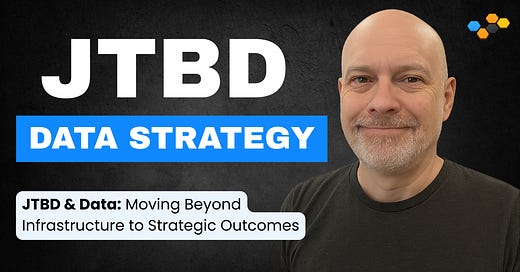JTBD & Data: Moving Beyond Infrastructure to Strategic Outcomes
Is your organization swimming in data but thirsting for wisdom? Do expensive dashboards gather dust while critical decisions are still made on gut feeling? You're facing a common challenge: treating data infrastructure as the goal, rather than enabling the real job your business needs information to do. It's time to shift perspective.
Applying the Jobs-to-be-Done (JTBD) framework offers a powerful lens to move beyond managing data assets towards enabling strategic outcomes. It forces us to ask: what fundamental progress are our people trying to make when they interact with data, and how can we help them achieve it more effectively?
This post outlines how a JTBD approach can fundamentally reshape your data strategy, uncover critical unmet needs, and ultimately help you build an information ecosystem that acts as a true strategic asset. We'll explore:
Defining the real 'job' of your data.
Identifying the struggles and desired outcomes hindering that job.
Using 'elevating abstraction' to desi…
Keep reading with a 7-day free trial
Subscribe to The Practical Innovator's Guide to Customer-Centric Growth to keep reading this post and get 7 days of free access to the full post archives.




